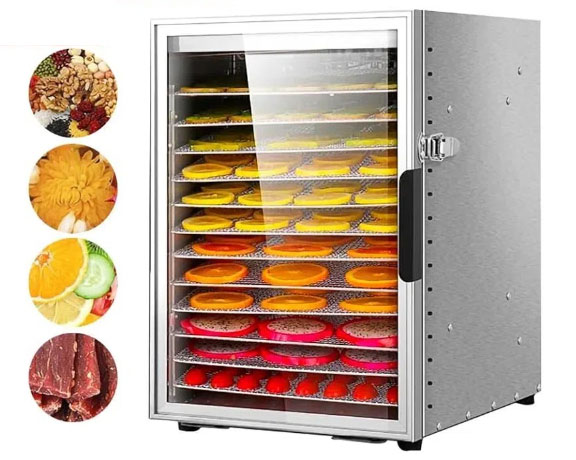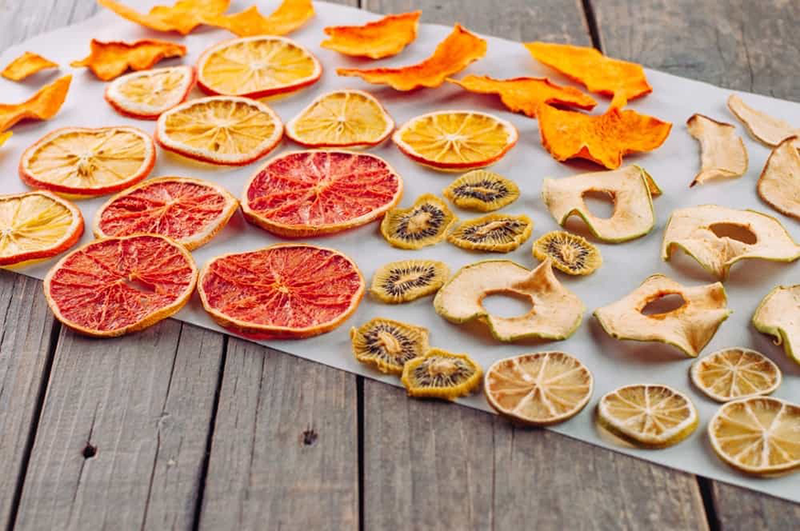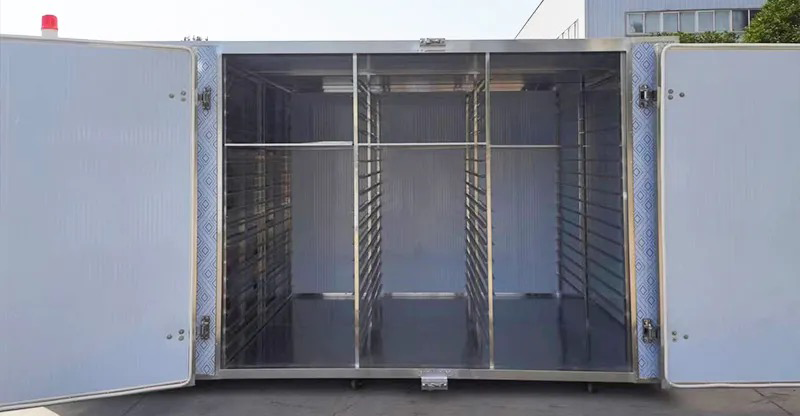
Content Menu
● Introduction to Food Dehydration Machines
>> Key Components of a Food Dehydrator
● Types of Food Dehydration Machines
>> Domestic Food Dehydrators
>>> Examples:
>> Commercial Food Dehydrators
>>> Examples:
● Cost of Food Dehydration Machines
>> Domestic Models
>> Commercial Models
● Benefits of Using Food Dehydration Machines
● Applications of Food Dehydration Machines
● OEM Services for International Brands
>> Advantages of OEM Services
>> How to Choose an OEM Partner
● Conclusion
● FAQs
>> 1. What is the typical temperature range for food dehydration?
>> 2. Can all foods be dehydrated?
>> 3. How do I choose the right food dehydrator for my needs?
>> 4. Are food dehydrators expensive to run?
>> 5. What are the health benefits of dehydrated foods?
● Citations:
Food dehydration machines, also known as food dehydrators, are essential tools for preserving food by removing moisture, thereby extending shelf life and enhancing nutritional retention. These machines are widely used in both domestic and commercial settings. In this article, we will explore the cost of food dehydration machines, their features, benefits, and applications, as well as provide insights into the OEM services offered by Chinese manufacturers for international brands and wholesalers.

Introduction to Food Dehydration Machines
Food dehydration machines work by circulating heated air over food placed on trays, effectively removing moisture without cooking the food. This process is crucial for preserving fruits, vegetables, meats, and other foods, making them ideal for snacks, emergency supplies, or long-term storage.
Key Components of a Food Dehydrator
1. Heating Element: Provides the heat necessary for dehydration.
2. Fan: Circulates hot air to speed up the drying process.
3. Trays: Where food is placed for dehydration.
4. Vents: Allow moisture to escape.
Types of Food Dehydration Machines
Domestic Food Dehydrators
Domestic food dehydrators are designed for home use and are generally smaller and more affordable. They are ideal for making snacks like dried fruits, fruit leathers, and jerky.
Examples:
- Elite Gourmet Food Dehydrator: A budget-friendly option with a compact design and dishwasher-safe parts. It lacks precise temperature control but is easy to use and efficient for small batches.
- Nesco Gardenmaster Food Dehydrator: Offers digital controls and expandable tray capacity, making it suitable for mid-range users.
Commercial Food Dehydrators
Commercial food dehydrators are larger and more powerful, designed for high-volume food processing. They are often used in restaurants, food manufacturing facilities, and large-scale food preservation operations.
Examples:
- Excalibur COMM1 Stainless Steel 12-Tray Commercial Food Dehydrator: A high-capacity model suitable for large-scale food dehydration.
- Avantco 24 Tray Stainless Steel Food Dehydrator: Offers a large capacity with a glass door for easy monitoring.

Cost of Food Dehydration Machines
The cost of food dehydration machines varies widely based on their size, features, and intended use.
Domestic Models
- Basic Models: Around $50 to $150 (e.g., Elite Gourmet).
- Mid-Range Models: $150 to $300 (e.g., Nesco Gardenmaster).
- High-End Models: $300 to $600 (e.g., Tribest Digital Food Dehydrator).
Commercial Models
- Small Commercial Models: $200 to $1,000.
- Large Commercial Models: $1,000 to $18,000 (e.g., Excalibur COMM2).
Benefits of Using Food Dehydration Machines
1. Nutrient Preservation: Dehydrating food helps retain nutrients by removing moisture without high heat.
2. Long Shelf Life: Dehydrated foods can be stored for years, reducing food waste and saving money.
3. Energy Efficiency: Dehydrators are more energy-efficient than ovens for drying foods.
Applications of Food Dehydration Machines
Food dehydration machines have a wide range of applications across different industries:
1. Food Manufacturing: Used for producing dried fruits, nuts, and snack foods.
2. Catering and Restaurants: Ideal for preparing dried meats and vegetables for dishes.
3. Home Use: Popular for making healthy snacks and preserving seasonal produce.
OEM Services for International Brands
Chinese manufacturers offer OEM (Original Equipment Manufacturer) services, allowing international brands to customize food dehydration machines with their logos and specifications. This service is beneficial for brands looking to expand their product lines without investing in manufacturing infrastructure.
Advantages of OEM Services
1. Cost Savings: Reduces the need for capital investment in manufacturing facilities.
2. Customization: Allows brands to tailor products to their specific needs and branding.
3. Quality Assurance: Partner manufacturers ensure high-quality products that meet international standards.
How to Choose an OEM Partner
When selecting an OEM partner, consider factors such as:
1. Experience: Look for manufacturers with extensive experience in producing food dehydration machines.
2. Quality Control: Ensure they have robust quality control processes in place.
3. Flexibility: Choose a partner that can accommodate your customization needs.
Conclusion
Food dehydration machines are versatile tools that offer numerous benefits for food preservation and nutrition retention. Whether for domestic or commercial use, the cost of these machines varies based on features and capacity. OEM services from Chinese manufacturers provide international brands with a cost-effective way to enter the market with customized products.

FAQs
1. What is the typical temperature range for food dehydration?
The typical temperature range for food dehydration is between 95°F (35°C) and 158°F (70°C), depending on the type of food being dehydrated.
2. Can all foods be dehydrated?
In theory, yes, most foods can be dehydrated, but some may require special handling or preparation.
3. How do I choose the right food dehydrator for my needs?
Consider factors such as capacity, temperature control, and energy efficiency when choosing a dehydrator. Your budget and intended use (domestic vs. commercial) are also important considerations.
4. Are food dehydrators expensive to run?
No, food dehydrators are generally energy-efficient compared to ovens. The cost of running a dehydrator depends on local electricity rates and usage patterns.
5. What are the health benefits of dehydrated foods?
Dehydrated foods can help reduce cancer risk, improve digestion, increase energy, and lower the risk of food poisoning. They also have a long shelf life and can be easily rehydrated.
Citations:
[1] https://www.thespruceeats.com/best-food-dehydrators-4077285
[2] https://www.equippers.com/food-prep-smallwares/food-prep-equipment/food-dehydrators
[3] https://fsdalle.en.made-in-china.com/product/AOxTcYHPufae/China-Factory-OEM-Food-Dehydrator-36-Tray-Food-Dehydrator-Food-Dryer-Dehydrator-Machine.html
[4] https://www.alamy.com/stock-photo/food-dehydrator.html
[5] https://www.youtube.com/watch?v=mtDzdYoyeR8
[6] https://en.wikipedia.org/wiki/Food_dehydrator
[7] https://www.webmd.com/diet/dehydrating-food-good-for-you
[8] https://cosori.com/blogs/blog/how-does-a-food-dehydrator-work
[9] https://www.linkedin.com/pulse/common-questions-food-dehydrators-aradmachinery
[10] https://www.dehydratefood.info/faq/
[11] https://cosori.com/collections/food-dehydrators
[12] https://www.webstaurantstore.com/13129/commercial-food-dehydrators.html
[13] https://www.webstaurantstore.com/guide/741/food-dehydrators-buying-guide.html
[14] https://www.thepurposefulpantry.com/dehydrating-faq/
[15] https://www.ukjuicers.com/dehydrator-faqs-a603
[16] https://www.dehydratorsamerica.com/category/shop-all
[17] https://www.alibaba.com/product-detail/Wholesale-Price-OEM-10-Layers-Home_1601206655729.html
[18] https://www.foodandwine.com/lifestyle/kitchen/best-food-dehydrators
[19] https://www.istockphoto.com/photos/food-dehydrator
[20] https://stock.adobe.com/search?k=dehydrator
[21] https://www.youtube.com/watch?v=IFugZm6TWzk
[22] https://www.shutterstock.com/search/dehydrator-machine
[23] https://extremewellnesssupply.com/blogs/news/how-does-a-dehydrator-work
[24] https://www.reddit.com/r/explainlikeimfive/comments/5b6ay9/eli5_how_do_dehydrators_work/
[25] https://www.hachettebookgroup.com/storey/buying-food-dehydrator/
[26] https://www.aromaco.com/faq/food-dehydrators/
[27] http://bushcraftusa.com/forum/threads/food-dehydrator-questions.288768/
[28] https://www.reddit.com/r/Cooking/comments/12umm6q/do_food_dehydrators_cook_the_food/
[29] https://excaliburdehydrator.com/pages/faqs
[30] https://www.dryequipmfr.com/oem-electric-food-dehydrator-factory/
[31] https://excaliburdehydrator.com/collections/commercial-dehydrator
[32] https://www.youtube.com/watch?v=1fP2rSLjys4
[33] https://www.youtube.com/watch?v=rR2G5UO-5Ms
[34] https://www.youtube.com/watch?v=JRArvU4PDVc
[35] https://www.youtube.com/watch?v=oiKk4nOeDKo
[36] https://www.youtube.com/watch?v=Zl4wTcCPJu0
[37] https://www.mitchellcooper.co.uk/what-is-a-dehydrator-commercial-buying-guide
[38] https://www.bestbuy.com/discover-learn/10-reasons-to-buy-a-food-dehydrator/pcmcat1634332391134
[39] https://pleasanthillgrain.com/resources/dehydrators-buying-guide
[40] https://brodandtaylor.com/pages/dehydrating
[41] https://learn.eartheasy.com/guides/a-beginners-guide-to-dehydrating-food/











